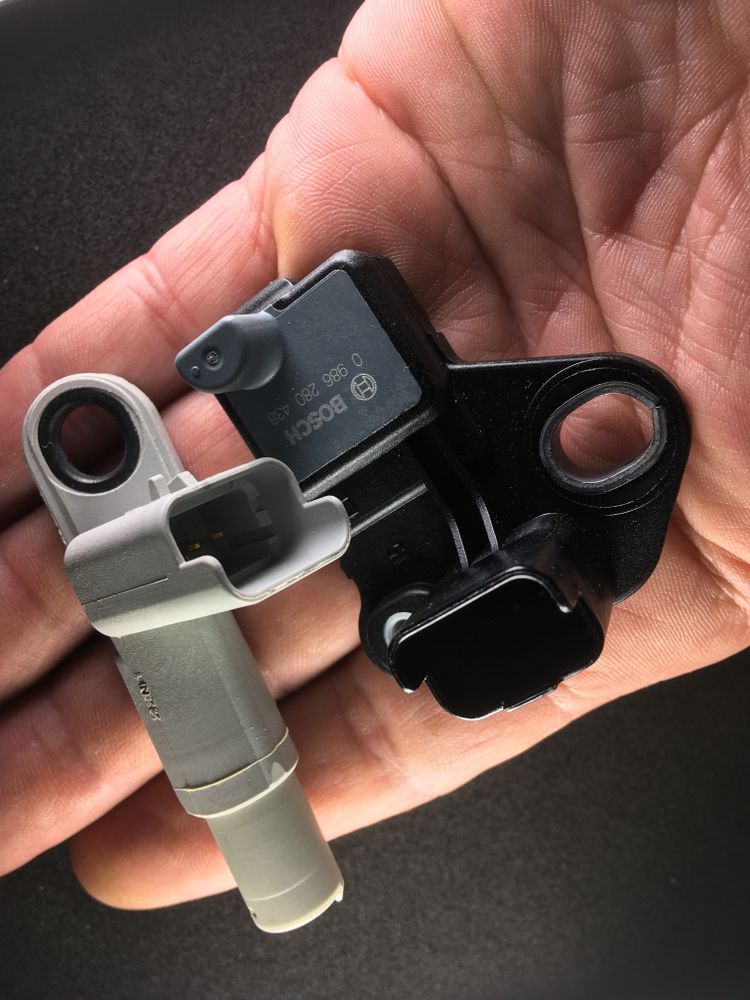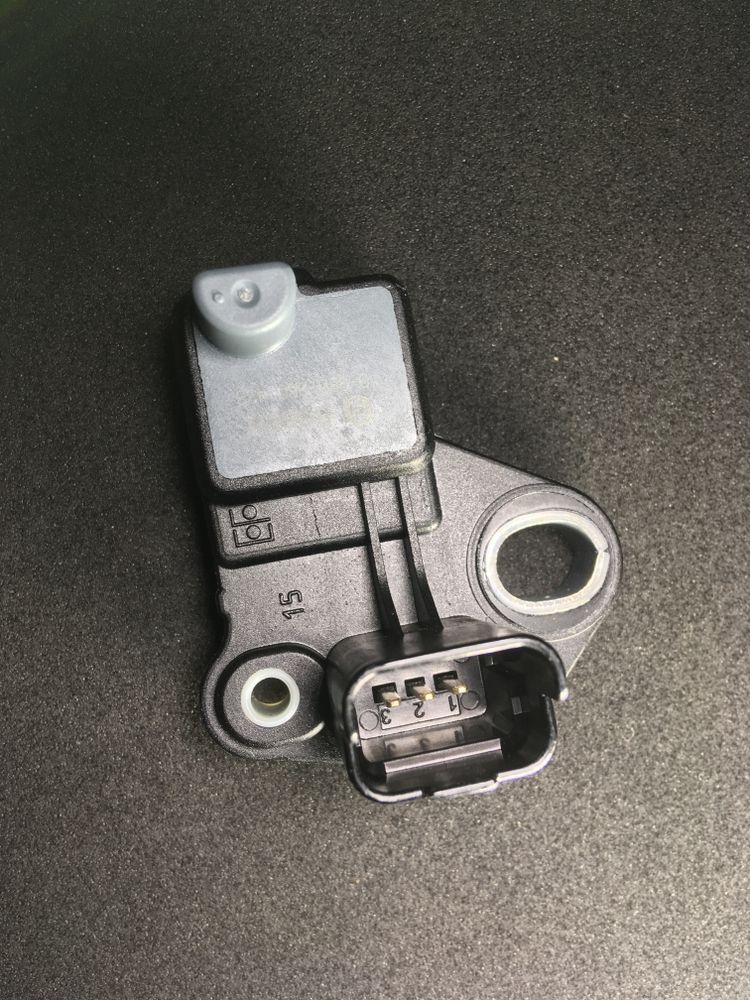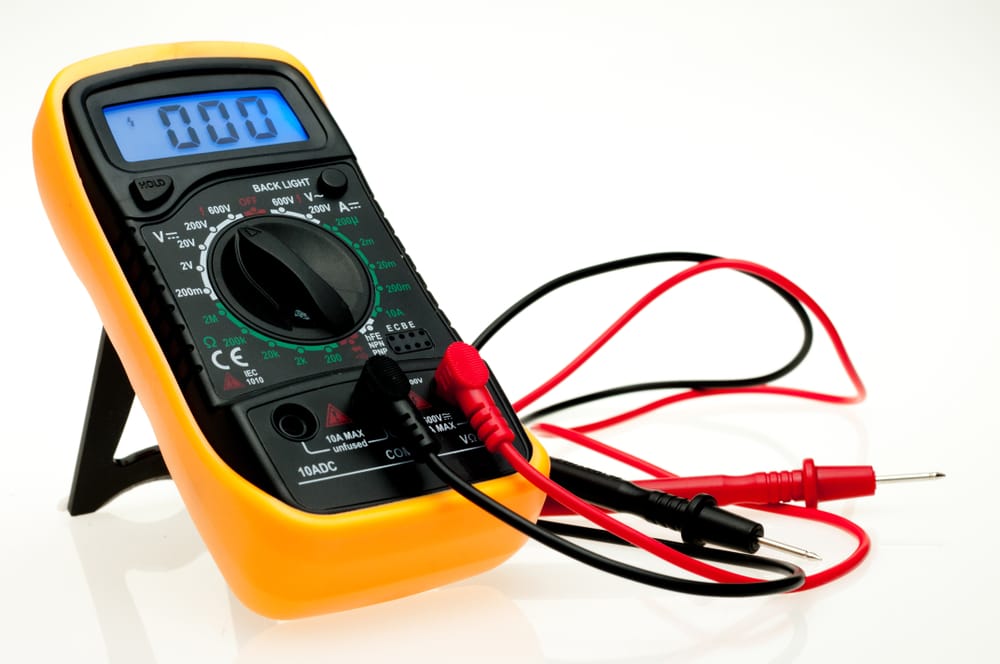The crankshaft sensor is an electronic sensor that monitors the rotation of the crankshaft. In addition, the sensor provides information to the engine control unit (ECU) used to control the ignition timing and fuel injection timing.
Unfortunately, if the crankshaft sensor goes bad, your engine will likely not start. So instead, you'll have to follow a few workarounds to get your car to start.
If you've managed to catch the problem early, you may be able to start the car with a bad crankshaft sensor. The engine may misfire but keep cranking the ignition until it starts. You'll notice poor and uneven acceleration as you drive, but it should last long enough to get your vehicle to a mechanic.
Alternatively, if you have some mechanical experience, you can check the connections or attempt to replace the crankshaft sensor on your own.
In this article, we'll walk you through everything you need to know about the crankshaft sensor, explain why it went bad, and discuss what you can do to start your car.
So, let's dive in and try to fix the problem.
 Typical crankshaft sensor in hand
Typical crankshaft sensor in hand
What Is a Crankshaft Sensor?
The crankshaft is a metal shaft that connects the pistons to the connecting rods.
The crankshaft helps to convert the linear motion of the pistons into the rotational motion necessary to turn the wheels.
The crankshaft is also what the starter motor engages to start the engine. As the crankshaft turns, it also turns the oil pump, water pump, and engine accessories.
The crankshaft is located at the bottom of the engine, where the main bearings support it.
The crankshaft sensor is an important engine management component. The sensor monitors the position and rotational speed of the crankshaft. The information is then sent to the engine control unit or ECU.
The ECU uses the information to control ignition and fuel injection timing. This ensures that the spark plugs fire at the correct time and that the right amount of fuel is injected into the cylinders.
Where Is My Crankshaft Position Sensor Located?
The crankshaft sensor is usually located at the back of the engine near the flywheel or Harmonic Balancer.
The sensor consists of a magnet, a coil of wire, and a sensor element.
The magnet spins past the coil and sensor element as the crankshaft rotates.
This produces an electrical signal that is sent to the ECU.
The ECU is usually located behind the passenger-side airbag, deep within the dashboard. It uses the information to control ignition and fuel injection timing, helping your vehicle run efficiently and smoothly.
If the crankshaft sensor is not working correctly, the engine will not run. The engine will not be able to start and will stall. Even if the engine does start, it will likely misfire and run rough.
 Gray crankshaft sensor
Gray crankshaft sensor
Steps On How To Start A Car With A Bad Crankshaft Position Sensor?
Generally, if your engine won't start because of a bad crankshaft sensor, it's simply because the vehicle isn't getting enough fuel into the engine. After all, the sensor controls how much fuel is injected into the system.
Although it's not advisable to drive your vehicle with a bad sensor any more than necessary, you'll have to get it into the mechanic somehow. To start your car, follow these steps:
- Locate the sensor: As noted above, the crankshaft sensor is positioned towards the back of the engine, near the flywheel. If it's not there, it may be mounted to the timing cover. You will have to remove the front passenger-side wheel to access the sensor.
- Unplug the sensor: Grab ahold of the sensor, squeeze, and unplug it from its mounting.
- Spray starter fluid into the opening: With the sensor removed, spray some starter fluid into the opening. This will help the engine ignite, and you'll be able to drive to a mechanic.
- Turn the ignition: If there's plenty of fuel in the tank, turn the ignition, and your engine should start. If nothing happens, it could be a problem with the spark plugs.
If your vehicle starts after following these steps, immediately take it to a mechanic and have them replace the sensor as soon as possible.
Problems Leading to a Bad Crankshaft Sensor
There are several reasons why a crankshaft sensor may fail. The most common cause is simply due to age and wear. The sensor element can become damaged or corroded over time. The wires can also become damaged or frayed.
Another common cause of failure is due to engine vibration. The sensor is usually located at the back of the engine, where it is subject to a lot of vibration. The vibration can damage the sensor element or cause the wires to become damaged or frayed.
Finally, the crankshaft sensor can fail if the engine is regularly overheating. The heat can damage the sensor element or cause the wires to split or melt over time. If your engine is overheating, this is usually caused by a lack of coolant, but your mechanic will be able to identify the bigger problem.
Symptoms of a Bad Crankshaft Sensor
If your vehicle's crankshaft sensor is starting to go bad, you'll notice a few symptoms indicating something is wrong. Some are easier to spot than others, though, so keep your eyes peeled for any slight change in your vehicle's performance.
Some of the tell-tale symptoms of a bad crankshaft sensor include:
- The car will not start: The most obvious symptom of a bad crankshaft sensor is if your engine refuses to start. Without a working sensor, the vehicle cannot regulate fuel injection, and your engine will not get the necessary mix of air and gasoline needed to ignite.
- The check engine light engages: If your crankshaft sensor is going bad, it will usually trigger the check engine light. The light will come on and stay on until the problem is fixed.
- The engine stalls or misfires: If your sensor is going bad, your engine may stall without warning or misfire. The misfire may be intermittent at first but will eventually become constant.
- Poor fuel economy: As your vehicle's crankshaft sensor begins to die, your fuel economy will also suffer. This is because the engine will run less efficiently and burn more fuel.
- Engine vibrations: Finally, you'll notice that the engine is vibrating more than usual, especially when idle. The vibration may be minimal at first, but it will become more noticeable and intense as the sensor continues to die.
If you've noticed any of these changes in your vehicle, take it to a mechanic as soon as possible to have the crankshaft sensor checked.
Testing a Bad Crankshaft Sensor
If you're experienced with cars, you can test the crankshaft sensor to see if it's truly the cause of the problem. To do this, you'll need a multimeter, which is an electrical testing tool.
First, locate the crankshaft sensor. It's usually located at the back of the engine near the flywheel or Harmonic Balancer. Once you've found the sensor, unplug it from its electrical connector.
 Multimeter
Multimeter
Now, using your multimeter, test the sensor for continuity. Set your multimeter to the "ohm" setting and touch the probes to the sensor's terminals. If the multimeter beeps or registers a reading, the sensor is good. If there is no reading or the multimeter does not beep, the sensor is bad and needs to be replaced.
Now, test the sensor's resistance. Set your multimeter to the "ohm" setting and touch the probes to the sensor's terminals. If the multimeter registers a reading of around 1,000 ohms, the sensor is good. If the reading is infinite or very low, the sensor is bad and needs to be replaced.
Can You Bypass A Crank Sensor?
If you've determined that your crankshaft sensor is bad and needs to be replaced, but you don't have the money or time to do so right away, you may be able to bypass the sensor.
Bypassing the sensor is not advisable, though, as it's a temporary fix that can cause more problems down the road.
Additionally, the exact steps needed to bypass your vehicle's crankshaft sensor vary from car model to car model. Essentially, you would have to cut and splice the wires inside the sensor to reroute how it sends electrical signals to the engine.
Because different cars use different sensors, it's nearly impossible to give an exact step-by-step explanation, and we recommend replacing the sensor instead. You'll save time and effort by getting the problem fixed properly.
Conclusion
The crankshaft sensor is a vital part of your vehicle's regulatory system. If the sensor is damaged or breakdowns due to age, your engine will likely not start. However, if you catch the symptoms of a dying sensory before it's too late, you can start your car and take it to a mechanic before the problem worsens.